-
Blue dwarf ‘walking’ snakehead fish
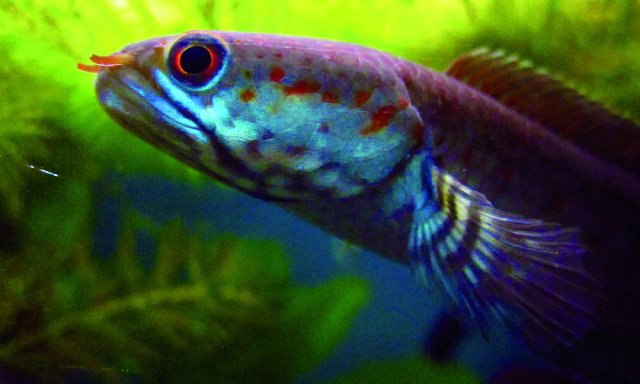
Henning Strack Hansen/WWF If you’re wandering around Nepal and you see a fish walking near your feet, don��t worry. A newly discovered species of snakehead fish found near the Himalaya mountain range can survive up to four days on land. And, while it’s there, it’s often moving. Scientists say the fish can wriggle its way on land for nearly a quarter of mile, typically to move from one body of water to another. When it’s in the water, the blue dwarf is much like other snakehead fish—an aggressive predator and prolific breeder. The snakes—typically found in shallow streams and swamps—can mate up to five times each year.
-
Hog-nosed rat Hyorhinomys stuempkei
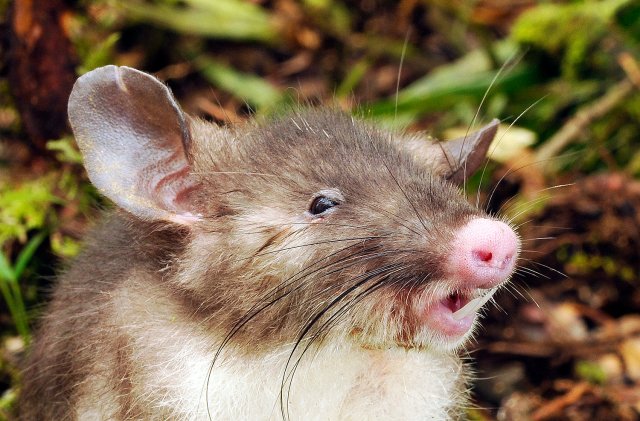
Museum of Victoria At first glance, Hyorhinomys stuempkei looks somewhat like a charming cross between a mouse and a pig. It has a large mouse ears, whiskers and a button nose. But then there are the enormous vampire teeth that extend from its tiny mouth. Not as cute. The animal—found on the Indonesian island of Sulawesi—was actually discovered back in 2013, but only this year has earned the new species classification.
-
Tiny frogs of the Brachycephalus genus
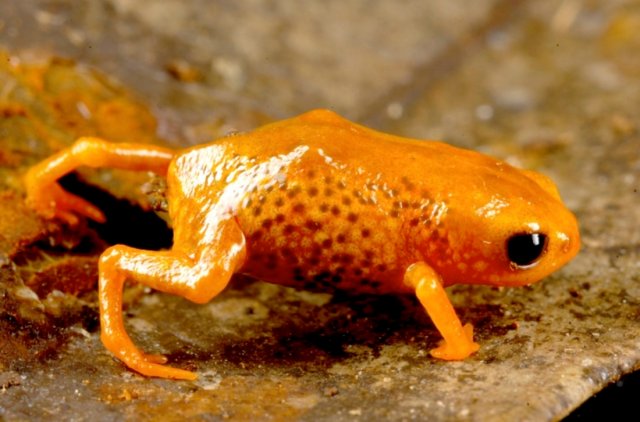
Marcio R. Pie These cute South American frogs look just like any other you might find in the Peruvian Andes—except that they’re probably smaller than any frog you’ve seen before. In fact, at 0.3 inches, they’re about the size of a human fingernail. The discovery of Brachycephalus couldn’t come soon enough. Like many other amphibious species around the world, these tiny frogs face a deadly fungus that endangers survival of the species and may disappear just as suddenly as they were discovered. The lead researcher behind the discovery suggested that the species may be able to survive because it can survive away from the water source where the fungus is found.
-
Vampire crabs: Geosesarma dennerle and Geosesarma hagen
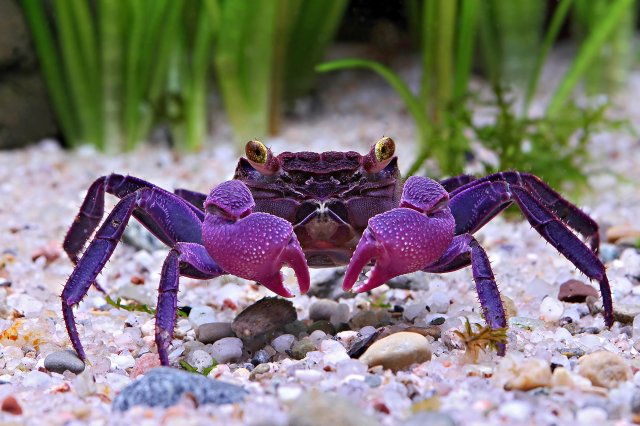
Chris Lukhapu There’s nothing quite like vampire crabs. The Indonesia natives have piercing yellow eyes and purple or orange bodies, making them both scary and pretty—and altogether bizarre. The new species designation for the crabs comes years after they first appeared in pet stores in Singapore. While the crabs appeared to be unlike anything seen before, scientists needed to discover their origin before a peer reviewed journal would grant them a new species tag. To do that, a German researcher traced the crabs through a network of dealers that led him to the Indonesian island of Java.
-
Nose-less monkey (Rhinopithecus Strykeri)
You know how Voldemort creeps you out because of his nose—or lack of it? Well, meet his monkey counterpart. OK, the animal, found in the remote Eastern Himalayan, does have a nose, but it’s inconveniently turned upward. On rainy days, many will sit with their heads between their knees to avoid having to sneeze. But they’re not always successful, earning them the local nickname “sneezing monkey.” Rhinopithecus Strykeri also has the distinction of being one of the rare large mammals discovered in recent years.
-
Bone house wasp Deuteragenia ossarium
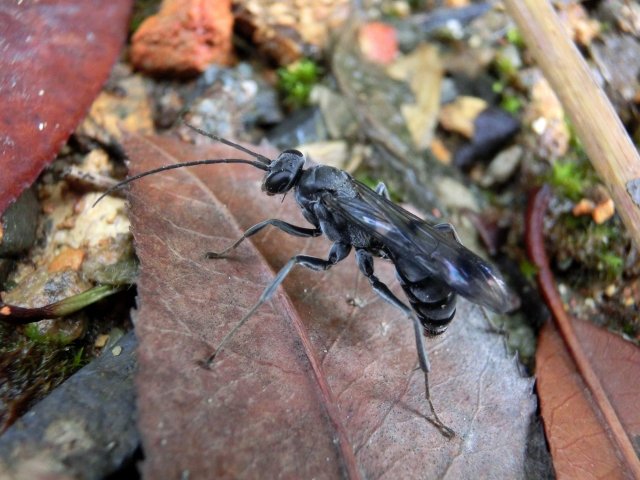
Michael Staab A living female of Deuteragenia ossarium on the forest floor Mothers of most species do a lot for their children, but the bone house wasp mother may top the list. The animal creates a nice home before its young are born complete with dead spiders and ants. The spiders will be the newborn’s first food source. The ants’ purpose is less clear.
-
Torquigener albomaculosus (pufferfish)
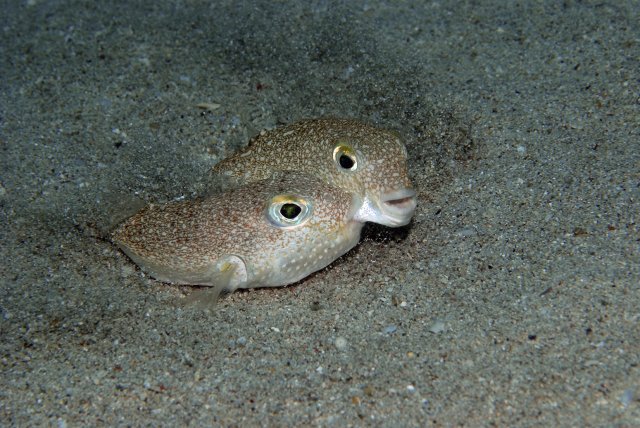
Yoji Okata—Minden Pictures Twenty years ago scientists discovered elaborate 7-foot circular patterns on the seafloor off the coast of Japan that seemed to appear out of nowhere. This year, investigators finally have the answer in the Torquigener albomaculosus pufferfish. Despite their small 5-inch bodies, male fish create the patterns on the seafloor as a mating call for females who use the artwork to judge potential mates. If she’s a fan of the circles, she will mate with the male and lay her eggs in the middle of the design he created just for her.
-
The carnivorous plant discovered on Facebook: Drosera magnifica
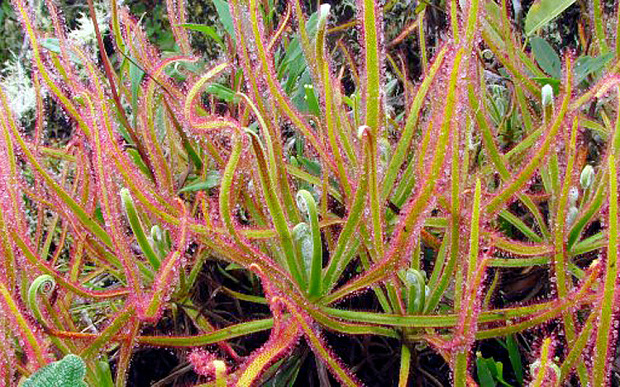
Paulo Gonella A carnivorous plant, Drosera Magnifica, discovered on Facebook. Drosera magnifica has it all. The big, five-foot plant seems Little Shop of Horrors-worthy in the way it uses sticky leaves to trap bugs. It may not be the first plant to grab it’s dinner this way, but it’s one of the first one that could practically look you in the eye when it does it. The great big bug-eater also has an impressive discovery story. Plant researcher Paulo Gonella stumbled upon a photo of it while scrolling through pictures on Facebook and decided to investigate. Gonella partnered with the amateur botanist who posted the photo to locate the plant in southeastern Brazil and publish on it in an academic journal. The plant—considered endangered—is thought to be the second largest carnivorous plant in North or South America.
-
Kermit the Frog (Hyalinobatrachium dianae)

Brian Kubicki—Costa Rican Amphibian Research Center The glass frog, Hyalinobatrachium dianae, found in Costa Rica. The resemblance is nothing short of uncanny. This new nocturnal species is found in Costa Rican rain forest. Images of “Kermit” quickly went viral after it was reported for the first time earlier this year. But, unlike the actual Kermit, Hyalinobatrachium dianae unfortunately cannot sing.
-
Homo naledi
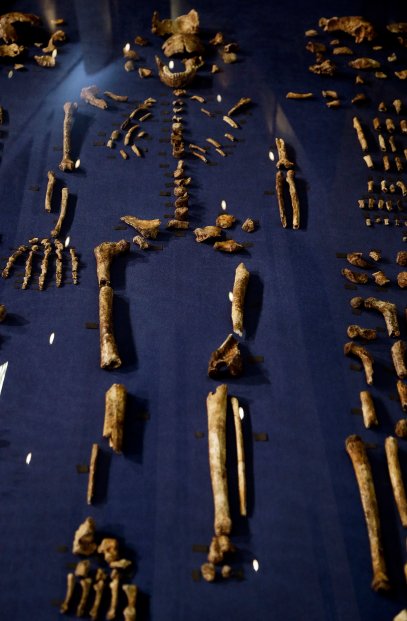
Themba Hadebe—AP A composite skeleton of Homo naledi surrounded by some of the hundreds of other fossil elements displayed in Magaliesburg, South Africa on Sept. 10, 2015. An unschooled observer might mistake Homo naledi for a human. The remains of 15 individuals found in South Africa are evidence of a species with hands, feet and opposable thumbs. The human-related species also appears to have buried its dead—which had been thought to be something pre-humans did not do. But Homo naledi is no human. The species roamed the planet millions of years ago, and it’s unclear exactly how it’s connected to present day homo sapiens. For that reason, the revelation of the new species in September threw evolutionary biologists for a loop. It’s a new piece of the puzzle to be sure, but its discovery also underscores how little we know about the creatures that preceded ours millions of years ago.